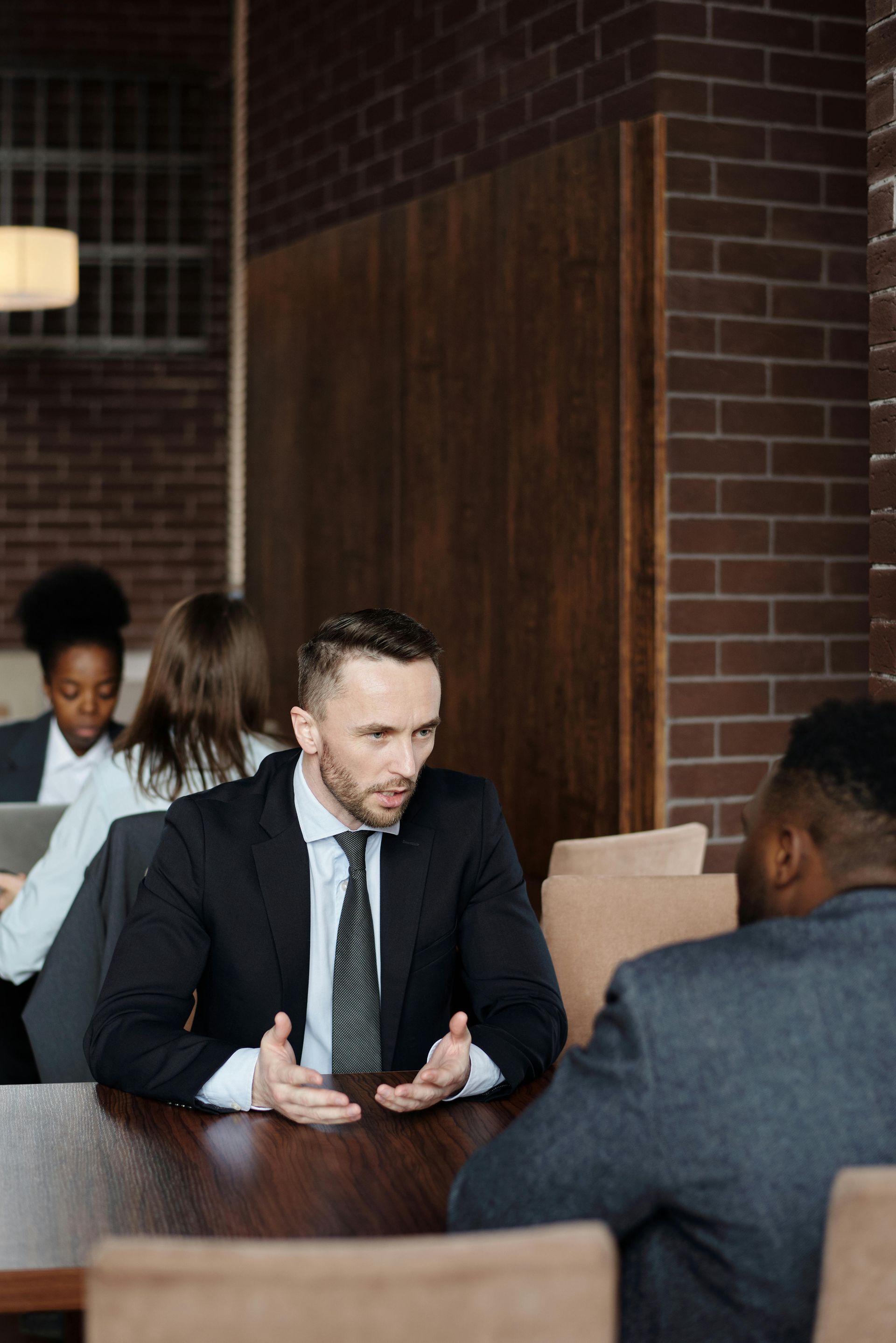Best way to learn a new language
written by: Krystof-Sandor Harfst
Table of Content
Summary - if you don't have time to read
This articles outline effective strategies for language learning, emphasizing the importance of consistent exposure, balancing understanding with practice, and engaging in real-world use of the language. It also highlights memory techniques, regular conversation, and staying motivated as key factors for success, with technology playing a supportive role.
- Immerse yourself in the language—real-world exposure (total immersion) leads to faster fluency.
- Balance input and output—both comprehensible input (listening, reading) and active output (speaking, writing) are essential for learning.
- Engage in real-time conversations—interacting with native speakers improves fluency and spontaneous use of language.
- Use spaced repetition—reviewing material at intervals helps retain vocabulary and grammar long-term.
- Create an immersive environment at home—use apps, media, and change device settings to the target language.
- Focus on listening early—start with slow, clear content, and gradually move to native-level media.
- Incorporate active learning—language exchange programs, conversation partners, and tutors help reinforce language use.
- Leverage memory aids—mnemonics, visualization, and storytelling boost retention of new vocabulary.
- Maintain motivation—set clear goals, reward progress, and join language communities for support.
- Use technology effectively—apps, VR, and AI tools offer interactive and engaging ways to practice and improve fluency.
The Science Behind Language Acquisition
Does the brain change when learning a new language?

Neuroplasticity, the brain's ability to reorganize itself, plays a significant role in language acquisition. Research shows that learning a new language rewires the brain, leading to structural changes in various regions. For instance, a study by K. Sakai (2005) found that the brain adapts to new grammatical structures through cortical plasticity, particularly in the grammar center, which is crucial for second-language acquisition .
Moreover, foreign language learning increases the volume of the hippocampus and thickens cortical areas related to language, such as the superior temporal gyrus. This was observed in a study where conscript interpreters showed significant brain growth after just three months of intensive language learning (Mårtensson et al., 2012) .
Similarly, neuroimaging studies reviewed by Ping Li et al. (2014) highlighted that second language learning boosts gray matter density and white matter integrity in areas of the brain associated with cognitive functions. These changes occur across age groups and proficiency levels, illustrating the brain's capacity for plasticity throughout life.
This evidence underscores that the brain not only learns new linguistic content but physically restructures itself to support the acquisition of a second language.
Critical periods in language learning
The concept of "critical periods" in language learning, often thought to limit adult language acquisition abilities, has been widely debated and largely misunderstood. While early theories proposed that adults are at a disadvantage compared to children due to brain plasticity constraints, newer research challenges this view. It has been shown that while children may benefit from certain "sensitive periods" for language learning, adults are still capable of successfully learning new languages, often utilizing different cognitive strategies and benefitting from increased working memory capacity.
- Critical Period Myths: Contrary to the outdated belief in a strict "critical period," research demonstrates that adults can learn new languages effectively, especially with high proficiency and working memory aiding their learning. For example, studies show that adult learners can achieve native-like processing of grammatical structures, though they rely more on their working memory and proficiency levels (Sagarra & Herschensohn, 2010).
- Role of Working Memory: Working memory plays a significant role in adult language acquisition, allowing learners to manage complex tasks like grammar and syntax. Studies show that late bilingualism, when acquired after the so-called critical period, can still positively influence working memory, which is crucial for mastering a new language (Huang, 2020).
In conclusion, while children may have some advantages in naturalistic language acquisition, adults are far from disadvantaged, utilizing different cognitive strategies and working memory to achieve proficiency in a new language.
Input Hypothesis vs Output Hypothesis
The debate between the Input Hypothesis and the Output Hypothesis in language learning is central to understanding second language acquisition.
- Input Hypothesis: Proposed by Stephen Krashen, this hypothesis emphasizes that comprehensible input—language slightly above the current ability of the learner—leads to acquisition. Krashen argues that exposure to language is sufficient for learning, as long as the input is understandable and slightly challenging. According to Krashen, active production (output) is less important for acquisition (Birkner, 2016).
- Output Hypothesis: In contrast, Merrill Swain's Output Hypothesis suggests that producing language is essential for learning. Swain argues that output helps learners notice gaps in their knowledge, test hypotheses about the language, and develop syntactic processing. Output promotes deeper cognitive engagement, which drives learning (Swain, 1985).
Research suggests that both input and output are complementary in the language learning process. Input provides necessary exposure, while output pushes learners to refine and use what they have learned in a communicative context. Studies show that output helps learners move from passive comprehension to active syntactic processing, which is essential for fluency (Izumi, 2003).
A balance of input and output is vital for effective language learning. Both play distinct yet complementary roles in developing language competence.
Best Practices for Language Learning Based on Research

Immersion and Consistent Exposure
Studies on Language Immersion Showing Faster Fluency Through Real-World Exposure
Language immersion, particularly when it involves consistent, real-world exposure, is a proven strategy for fluency enhancement and language retention. In English immersion programs, learners are surrounded by the target language environment, offering constant opportunities for practical use and interaction with native speakers. This active involvement reinforces language acquisition through daily, real-life situations. Research shows that immersive environments significantly improve outcomes by providing authentic, everyday language use, helping learners reach native levels of speaking more quickly than traditional methods. For example, virtual reality (VR) platforms simulate natural conversations and encourage active learning, improving both fluency and comprehension through real-world exposure (Legault et al., 2019).
Comparison Between Total Immersion vs. Simulated Immersion
Total immersion, such as living abroad, offers full exposure to the target language environment where learners face both formal and informal language interactions. This deep exposure allows learners to rapidly acquire the nuances of language and culture. On the other hand, simulated immersion, like language apps or media, provides structured learning with preparation beforehand but lacks the unpredictability of real-world interactions. While simulated methods like VR or apps are effective, offering a more controlled environment, they may not fully replicate the high pressure of communicating in real-life situations. Both approaches have benefits, but studies indicate that total immersion tends to yield faster language development due to the constant demand for communication, while simulated immersion offers learners a way to build confidence and skills in a low-stakes environment (Garcia et al., 2019).
Practical Tips for Creating an Immersive Environment at Home
To simulate immersion at home, learners can:
- Engage in daily practice by watching shows or listening to podcasts in the target language, which helps improve listening skills and exposes learners to the rhythm and accent patterns of native speakers.
- Change device settings to the target language, creating a passive learning environment that reinforces vocabulary and basic grammar through constant practical use.
- Use language apps or VR tools to engage in interactive, real-world scenarios for active learning without the pressure of academic or native-level environments (Kaplan-Rakowski & Gruber, 2023).
While total immersion may offer faster results, simulated immersion with consistent daily practice and focused grammar practice can also provide substantial improvements, particularly when combined with active engagement in the target language.

Comment of Luca Lampariello
When it comes to language learning, the key is to acquire the language naturally, rather than forcing yourself to memorize rules. Immersing yourself in rich, enjoyable, and comprehensible content allows you to absorb the language over time. This approach is more sustainable and makes learning feel less like a chore.
Experimentation is also vital. Look at successful polyglots and see what habits they share—these are the universal principles of language learning. By trying different methods, you'll find what works best for you and keeps you motivated.
Lastly, focus on building systems and habits, not chasing quick results. Consistent exposure and practice will yield steady progress, even if it feels slow at first. The process is what drives long-term success, so embrace it with patience and persistence.
Luca Lampariello, lucalampariello.com

Comment of Simon Ager
Learning songs in other languages is a good way to improve your listening, pronunciation, vocabulary and grammar. It's fun and can help keep you motivated, especially if you learn songs that you enjoy
listening to and want to sing along to. Not all the words and expressions you learn from songs will be useful in everyday conversations, but they're good to know anyway, and the rhythm and melodies of songs can help you to memorize them.
Learning songs from other countries is also a good way to learn about other cultures, and to connect with people in those countries. If you watch and listen to music videos in a language you're learning online, for example, you can leave comments in that language, and maybe get into discussions. You might go to concerts and meet other fans of your favorite bands, and if you speak their language, you can have conversations with them, and maybe make some new friends.
I've got interested in several languages through music, especially Spanish, Portuguese, Irish and Scottish Gaelic. I've done courses in Irish and Scottish Gaelic songs, and learnt and written songs in various other languages. Recently I've been listening to a lot of songs in Japanese, and this has motivated me to learn more Japanese, and I'm going to see Babymetal (a Japanese kawaii metal group) in London at the end of this month.
Simon Ager, omniglot.com

Active Learning: Speaking and Interaction
The Importance of Real-Time Conversations and Interactions in Language Learning
Real-time conversations and interactions are essential for language learning because they expose learners to authentic use of the target language and provide immediate opportunities to practice. Engaging in conversations, especially with native speakers, improves fluency by encouraging spontaneous language production and correction in real-time. Active speaking helps learners solidify their language skills, moving from passive understanding to active use, which is critical for fluency development
(Mackey & Silver, 2005).
Research on the "Interaction Hypothesis" and How It Aids Fluency
The Interaction Hypothesis, proposed by Michael Long, highlights the importance of interaction in second language acquisition. The hypothesis suggests that learners improve language skills through conversational interactions that provide opportunities for negotiation of meaning. In these interactions, feedback from conversational partners helps learners notice gaps in their knowledge, leading to modifications and improved fluency. Research shows that interactive tasks that involve feedback and recasts (corrections during conversation) significantly aid the learning process by pushing learners to modify their output
(Namaziandost & Nasri, 2019).
Methods to Incorporate Active Learning: Language Exchange Programs, Conversation Partners, Tutors
To incorporate active learning, learners can take advantage of the following methods:
- Language Exchange Programs: Platforms like Tandem or iTalki allow learners to connect with native speakers for conversation exchanges. These programs provide real-time speaking practice, allowing learners to improve their conversational skills in a low-pressure environment (Beaven et al., 2017).
- Conversation Partners: Learners can engage in weekly conversations with native speakers or other learners to practice language use. This method helps learners improve fluency by practicing conversational turn-taking and receiving feedback on their speech (Saito & Akiyama, 2017).
- Tutors: Platforms like iTalki offer professional tutors who guide learners through structured conversation practice, correcting mistakes in real-time and providing focused feedback to enhance fluency.
In conclusion, real-time speaking and interaction, whether through conversation partners, tutors, or exchange programs, are crucial for achieving fluency in a new language.

Comment of Jimmy Mello
In my experience, the most effective way to learn a language is through immersive, consistent practice that emphasizes speaking and listening. The Mello Method, which I developed, is centered around conversational fluency from the start, encouraging students to engage actively with the language in short, focused sessions. This approach minimizes initial reliance on writing and reading, allowing learners to naturally acquire grammar and vocabulary through repetition and real-time conversation. Another key is regular exposure—whether it's practicing with native speakers, using audio resources, or integrating the language into daily life. Motivation and consistency are also essential; learning a language is a journey, and small, daily steps make a significant impact.
Jimmy Mello, learnbyreadingme.com
Spaced Repetition and Memory Techniques
Spaced Repetition Systems (SRS) and the Forgetting Curve
Spaced Repetition Systems (SRS) are designed to align with the brain's natural forgetting process, as described by Hermann Ebbinghaus. His Forgetting Curve shows that memory retention decreases rapidly after learning unless reviewed at intervals. Ebbinghaus found that repetition over time, rather than cramming, reinforces memory retention, slowing down the forgetting process (Patten, 2017). Spaced repetition leverages this concept by scheduling reviews at increasingly longer intervals, optimizing long-term retention (Wollstein & Jabbour, 2023).
Tools for Vocabulary Retention
Modern tools like Anki, Memrise, and Quizlet incorporate spaced repetition algorithms to help learners retain vocabulary more effectively. These apps use SRS to prompt learners to review words at optimal times before they are forgotten, significantly improving retention rates compared to traditional study methods. Studies show that SRS-based tools are particularly useful for language learners, as they help encode vocabulary into long-term memory (Tabibian et al., 2019).
Mnemonics and Other Memory Aids
Memory aids like mnemonics, visualization, and storytelling are highly effective in language learning. Mnemonics create associations between unfamiliar words and familiar concepts, making them easier to remember. For instance, creating a vivid mental image or linking a new word to a well-known phrase enhances recall. Visualization and storytelling can also serve as powerful memory aids by transforming abstract information into memorable narratives, helping learners connect and retain words more effectively (Shah et al., 2020).
Combining spaced repetition with mnemonic devices and active learning tools provides a powerful approach to language acquisition and memory retention.

Focus on Listening: Passive to Active
The Role of Listening Comprehension in Acquiring a Language
Listening comprehension plays a critical role in language acquisition. It provides learners with the necessary exposure to the target language's sounds, patterns, and rhythms, forming the foundation for developing other skills such as speaking, reading, and writing. Listening is often considered the primary channel for acquiring a language, especially in the initial stages (Vandergrift, 1999). Additionally, studies show that learners can grasp grammar and vocabulary more naturally through consistent listening exposure before they become actively involved in speaking or writing (Mousavi et al., 2016).
Studies Showing How Extensive Listening Helps Learners Recognize Patterns, Grammar, and pronunciation NaturallyExtensive listening allows learners to subconsciously acquire grammar and pronunciation through repeated exposure to authentic language. Studies have demonstrated that when learners engage in extensive listening, they are better at recognizing sentence structures and phonetic nuances, which accelerates the acquisition of speaking and writing skills. For instance, research on extensive listening in Arabic classes found that students improved not only in vocabulary but also in grammar and pronunciation by analyzing audio content like audiobooks and podcasts (Yudhiantara & Syihabuddin, 2023).
Tips: Starting with Slow, Clear Content and Moving to Native-Level Media
For beginners, it’s important to start with slow, clearly articulated content, such as language-learning podcasts, educational YouTube channels, or news tailored for learners. Over time, learners can gradually transition to more advanced native-level media like TV shows, movies, or native-language podcasts. Using resources like YouTube channels and language-specific podcasts provides exposure to real-world speech, and apps like Tandem or iTalki can further support listening comprehension by allowing learners to practice with native speakers. This combination of slow-to-native media accelerates both passive and active listening skills.
Extensive listening helps learners build a strong foundation in grammar, pronunciation, and comprehension, making it a crucial aspect of language acquisition.

Comment of Cesco Reale
My main tips for language learning are: 1) phonetics 2) tandem 3) etymology and 4) icons.
1. If you want to have a good pronunciation it is a good idea to focus on learning the phonemes (sounds) of your target language BEFORE starting learning the language. Dedicate few hours to study the phonology of your target language (and possibly also general phonetics, if you want to learn other languages); then read aloud texts (possibly without understanding and without learning words, otherwise you will have later to unlearn or correct the bad pronunciation you acquired), with someone correcting your pronunciation. Often a non-native phonetic expert with a very good pronunciation can help much more than a native speaker that does not know how to explain how to produce the phonemes of their own language. Here my introduction to phonetics.
2. Use some time (lunch break, commuting time, etc.) to have regular tandems (language exchanges, e.g. one hour per week); a good tip for many, but not for all: if you speak language A, your partner can answer in language B and vice versa. In this way you don't need to be strict on time, both are practicing at the same time and you train your ability to switch languages. Here my talk on language exchanges.
3. Etymology can help a lot to remember words and to connect them to other languages. E.g. the famous dessert "tiramisu" in Italian means "pull (tira) me (mi) up (su)", because it is a highly energetic sweet course; so now you can easily remember how to say "pull", "me" and "up" in Italian. "Forgive" in French is "pardonner" and in German is "vergeben", and the structure is the same: a prefix (for-par-ver) plus "give", that is "donner" in French and "geben" in German.
4. I created a team with which I developed a visual method for language learning: we created (and are still creating) a visual language (IKON) that allows to translate virtually any sentence only through icons in a precise way, so that you can visualise new words and grammar concepts (tenses, prepositions, pronouns, etc.). Visit our website (www.komunikon.com) and contact us to know more.
Cesco Reale, komunikon.com

Comment of Gabriel Gelman
From my experience, the best way to learn a language is by listening a lot to it. Surround yourself daily with content, like podcasts, audiobooks, or YouTube videos. This daily habit helps you naturally understand how people really speak, making it feel less like studying and more like enjoying a hobby. Try to switch some of your regular activities into your target language—things like cooking, exercising, or even commuting—to consistently immerse yourself. Start with beginner materials first. There is lots of beginner's content especially on YouTube and in podcasts. The more you understand the more difficult the content can get.
Once you get more comfortable with the language, and you start to understand intermediate content more or less, speaking regularly becomes just as crucial. Aim to speak with native speakers at least three times a week. At the beginning, shorter sessions work best to ease into it, and as your confidence grows, gradually increase the duration of your conversations. Frequent practice is essential; the more you speak, the faster you'll notice progress.
Another important strategy I recommend is learning with chunks rather than individual words. Chunks are word combinations that native speakers use all the time such as "good morning" and "I'd like". This method helps you sound more natural and fluent. I've combined these three activities—regular listening, learning through chunks, and consistent speaking practice—into the "Sprachblock-Methode". This approach organizes language learning into manageable, practical blocks, making it easier to master both vocabulary and grammar without getting overwhelmed
Gabriel Gelman, sprachheld.de
Balancing Accuracy and Sequence in Language Learning
In language learning, accuracy-first approaches, such as the audio-lingual method, emphasize mastering grammatical patterns and imitative language use before progressing to spontaneous communication. These methods often use a call-and-response format, focusing on drills and repetition to ensure learners internalize structures in a fixed order. While this approach aids in understanding grammar, it can slow the transition to spontaneous language use.
The developmental sequence of language acquisition suggests that learners naturally progress through a developmental timeline, acquiring some structures earlier than others. Though accuracy is important, focusing too much on grammar can hinder fluency. Research shows that learners benefit from a balance between accuracy and real-world communication (Margolis, 1982).
Incorporating methods that combine vocabulary teaching with opportunities for interaction can help learners transition from structured to spontaneous language use. This balanced approach fosters both grammatical accuracy and communicative proficiency (Hieke, 1981).
Consistency in Language Learning
Daily practice plays a crucial role in language acquisition, as regular exposure helps to form strong brain connections that are essential for both knowledge retention and recall improvement. Consistency in grammar practice and vocabulary teaching helps learners solidify their understanding of grammatical rules and word usage, which in turn leads to better language fluency. Studies suggest that comprehensive practice, including structured lessons and corrective feedback, enhances both accuracy and fluency over time (Ranta & Lyster, 2007).
Maintaining momentum through consistent practice, especially with native speakers or in online courses, ensures that learners follow a proper sequence of acquiring language skills. This structured approach fosters steady progress, allowing learners to internalize the rules of the language while actively applying them in real-life scenarios (Bahrick et al., 1993).
In conclusion, consistent practice, supported by corrective feedback and real-life application, is key to building fluency and improving long-term language retention.
Input-driven learning
Input-driven learning focuses on the idea that language acquisition primarily occurs through exposure to meaningful language input. This approach is heavily rooted in Krashen’s Input Hypothesis, which argues that learners acquire a language when exposed to comprehensible input, language that is slightly above their current proficiency level but understandable with context. This is particularly effective in immersion programs, where learners are consistently surrounded by the target language environment, promoting language comprehension without direct focus on grammar (Loschky, 1994).
However, other theories, like the Interaction Hypothesis, emphasize the role of interactive communication in second language acquisition, where negotiation for meaning during conversations aids comprehension. Output Hypothesis, on the other hand, suggests that learners need opportunities to produce language, not just receive it, for full acquisition. Comprehensible output allows learners to test and refine their language skills in real-time conversations (Mehrdad et al., 2016).
Input-based approaches often reduce the focus on explicit instruction or grammar drills, preferring to immerse learners in the language naturally. However, critics argue that a balance between input and output, or an interactionist paradigm, is necessary for learners to achieve native levels of comprehension and fluency. Studies suggest that interactive opportunities to both understand and produce the language promote stronger long-term learning outcomes (Nagata, 1998).
While input-driven learning provides the foundation for language acquisition, combining it with interaction and output enhances learners' ability to apply language in real-life situations.

Learning Through Association
Learning through association plays a crucial role in second language acquisition by building mental links between words and their meanings. Word association allows learners to connect new vocabulary with existing knowledge, which enhances language recall. These cognitive processes are vital for developing fluency levels, as learners create a cognitive map of language connections that support faster retrieval of information in conversation.
Bilingualism provides additional cognitive benefits, as learners tend to develop stronger memory connections across both languages. Studies show that bilingual individuals, even in their early stages of learning, perform better on memory association tasks compared to monolinguals, which further aids in language comprehension (Bilson et al., 2014). Associating words and grammatical structures with context, whether through formal practice or exposure to communication contexts, builds stronger language pathways in the brain.
For learners aiming to achieve higher fluency levels, consistent practice, combined with grammar patterns and contextual word use, can lead to improved retention and quicker language retrieval. Utilizing techniques like word pairing or linking new vocabulary to familiar concepts enhances the natural flow of language acquisition, making the learner's transition into real-world communication contexts smoother and more effective.
Learning through association fosters stronger connections in memory, boosting both comprehension and recall, which are critical for developing fluency in a second language.
Psychological Factors and Motivation

The Role of Motivation in Language Learning
Research into Intrinsic vs. Extrinsic Motivation
Motivation is a key factor in successful language learning, and it is often categorized into intrinsic and extrinsic types. Intrinsic motivation stems from a learner's personal interest or enjoyment in the language, while extrinsic motivation arises from external factors such as rewards, career opportunities, or societal expectations. Gardner’s Socio-Educational Model highlights the importance of both intrinsic and extrinsic motivation, with a focus on integrative motivation, where learners are motivated to learn a language to integrate into a culture, and instrumental motivation, driven by practical goals like job prospects (Gardner, 2019).
How Motivation Affects Persistence and Language Outcomes
Research shows that motivation strongly influences both persistence in language learning and overall language outcomes. Learners with high levels of motivation, particularly intrinsic motivation, tend to engage more deeply with language learning and persevere through challenges. Studies have also shown that integrative motivation, where learners have a desire to connect with the language and its culture, is particularly effective in producing long-term language success. Learners who are motivated intrinsically are more likely to achieve higher levels of proficiency (Chew, 2023).
Tips for Maintaining Motivation
- Set Clear, Achievable Goals: Break down language learning into smaller, attainable goals. This helps create a sense of progress and achievement.
- Reward Progress: Positive reinforcement, such as rewarding yourself after completing a lesson or mastering a new skill, can boost motivation, particularly extrinsic motivation (Husna & Murtini, 2019).
- Join Language Learning Communities: Being part of a language learning community, either online or in person, provides a support system and fosters social interaction, which can maintain or increase both intrinsic and extrinsic motivation. Platforms like Duolingo forums or Tandem allow for both social interaction and language practice, which enhances integrative motivation by creating a sense of belonging.
Motivation—both intrinsic and extrinsic—plays a vital role in language learning, affecting both persistence and success. By setting clear goals, rewarding progress, and engaging in language communities, learners can maintain their motivation throughout the language acquisition process.
Managing Language Learning Anxiety
The Impact of Anxiety on Language Performance
Language learning anxiety can significantly hinder performance, affecting learners' ability to engage with the language effectively. Research using Horwitz's Foreign Language Classroom Anxiety Scale (FLCAS) has shown that anxiety is often rooted in fear of negative evaluation, communication apprehension, and test-related stress. These factors can lead to lower performance in language tasks, particularly in speaking and pronunciation. For example, students experiencing high anxiety tend to avoid participating in class, which prevents them from gaining valuable practice (Alshahrani, 2016), (Sansaluna et al., 2021).
Strategies to Reduce Anxiety
- Embrace Mistakes: One of the most effective ways to reduce language learning anxiety is to embrace mistakes as part of the learning process. Anxiety often stems from the fear of being incorrect or misunderstood. By shifting focus from perfection to progress, learners can reduce the pressure they feel in communication, leading to greater language use and improved skills over time. Teachers can help by creating a supportive classroom environment where errors are viewed as learning opportunities (Jun-hong, 2007).
- Focus on Communication Over Perfection: Encouraging learners to prioritize communication over grammatical perfection can alleviate anxiety. The goal should be to convey meaning, even if minor errors occur. This approach promotes fluency and reduces the cognitive burden of constantly monitoring grammar, which can be overwhelming for anxious learners (Çakici, 2016).
Managing language learning anxiety requires embracing a mindset that values communication and learning from mistakes, rather than striving for immediate perfection. Through such strategies, learners can significantly reduce their anxiety and enhance their language performance.
Technological Aids and Language Learning in the Digital Age

Overview of Popular Language Learning Apps Like Duolingo and Babbel
Language learning apps such as Duolingo and Babbel have revolutionized the way people acquire new languages by incorporating gamification to engage and motivate learners. Gamification strategies include rewards, level-based progress, and competitive rankings, which help users stay motivated and maintain consistent learning habits. These apps break learning into bite-sized tasks, making the process less intimidating and more accessible, even for beginners. Studies show that apps like Duolingo provide effective grammar and vocabulary practice through gamified content, while Babbel tends to focus more on practical language skills and cultural insights (Shortt et al., 2021). Despite their differences, both platforms succeed in maintaining learner interest through well-designed gamification systems (Sakalauskė & Leonavičiūtė, 2022).
The Benefits of AI Language Tutors for Practicing Conversations
AI-powered tools, such as GPT-based chatbots, are increasingly used in language learning, providing learners with interactive conversation practice. These chatbots can simulate real-life dialogues, offer instant feedback, and help correct mistakes, which makes them excellent resources for developing speaking and comprehension skills. Research shows that using chatbots for conversation practice can reduce anxiety and create a safe space for learners to practice without fear of making mistakes in front of others. Additionally, chatbots help users maintain conversational fluency and improve grammar usage through real-time interaction (Alm & Nkomo, 2020). AI tools like these allow for personalized learning experiences by adapting to a user’s specific learning needs and progress (Liu et al., 2021).
Language learning apps and AI tools offer an engaging, flexible, and effective approach to acquiring new languages. Gamification motivates users, while AI-driven chatbots provide essential practice in real-time conversation.

Virtual Reality and Language Learning
The Emerging Role of Virtual Reality (VR) and AI-Driven Immersive Experiences in Language Learning
Virtual reality (VR) and AI technologies are rapidly transforming the field of language learning by creating immersive environments that simulate real-world interactions. Unlike traditional methods, VR offers learners a chance to practice in realistic scenarios, which enhances their comprehension and fluency. These technologies combine visual, auditory, and kinesthetic learning, allowing users to experience the language contextually, making the learning process more engaging and effective. Research highlights that VR-driven environments enhance retention and promote better language acquisition through immersive experiences
(Chang et al., 2012).
Examples of VR Platforms that Replicate Real-World Environments for Immersive Learning
Several VR platforms have emerged that replicate real-world scenarios for immersive language learning. For instance, Immerse and Mondly VR offer learners the opportunity to engage in everyday conversations within virtual spaces like cafes or streets, providing real-life context while practicing their target language. Oculus Rift and platforms like EduVenture VR focus on scenery-based simulations, allowing learners to virtually "visit" locations relevant to their target language and practice speaking through scenarios such as navigating a city or ordering food in a restaurant
(Garcia et al., 2019). These environments are effective in building confidence and improving both oral and written skills in the target language through engaging, real-world contexts
(Lin et al., 2021).
VR and AI tools offer immersive, context-rich environments that can significantly enhance language learning, bridging the gap between traditional classroom learning and real-world language use.
Tailoring Language Learning to the Individual
Learning Styles and Preferences
Different Types of Learners (Visual, Auditory, Kinesthetic)
Learners can be categorized based on their preferences for processing information, generally classified as visual, auditory, and kinesthetic learners. Visual learners tend to absorb information best through imagery such as charts, diagrams, and reading. Auditory learners prefer listening to spoken information, such as lectures or discussions, while kinesthetic learners favor hands-on approaches like physical activities or simulations. Studies suggest that adapting teaching strategies to match these styles can enhance learning outcomes, as each learner tends to process information most effectively when taught in their preferred way (Pourhosein Gilakjani, 2011).
Studies Suggesting the Importance of Adapting Learning to One’s Style
Research has shown that understanding individual learning preferences can improve retention and comprehension. For instance, a study on young learners found that when teaching strategies were aligned with students' learning preferences, particularly for visual and auditory learners, performance improved significantly (Kaçauni, 2023). Additionally, tailoring activities to accommodate different learning styles has been linked to more engaging and effective language education environments, particularly for younger students.
Practical Tips for Discovering What Works Best for You
- Experiment with different methods: Try flashcards for visual learning, speaking practice for auditory learning, or role-playing for kinesthetic learning to determine which methods work best for you.
- Use multimedia tools: Apps like Memrise or Quizlet combine visual and auditory elements, making them effective for multimodal learners.
- Adapt your environment: If you're an auditory learner, consider using podcasts and listening exercises, whereas kinesthetic learners might benefit from interactive apps or real-world language practice.
Identifying and adapting to your learning style can optimize your language learning journey, making it more effective and enjoyable.

Comment of Lindsay Dow
The best way to learn a language isn't one particular 'method' or 'system' that someone else has decided is the 'best'. Instead, the smartest thing you can do to help make languages easier and quicker and more enjoyable to learn is to become your own teacher.
That doesn't mean you never work with teachers or anyone else. Instead, it means that you're the one who is in charge of what you'll do, when and how.
Language learning should always be three things - fun, flexible, and functional. When you're your own teacher, you're able to make sure it always ticks all three of those boxes.
So how do you do it? How do you become your own teacher and ensure languages stay fun, flexible, and functional? You learn how to learn languages, and you learn how YOU learn languages. That's the best way to learn a language.
Lindsay Dow, lindsaydoeslanguages.com
Balancing Grammar with Natural Usage
Debate Between Grammar-Focused Instruction and Learning Language Naturally Through Use
The debate on whether to prioritize grammar instruction or learning through natural usage has been central to language acquisition research. Grammar-focused instruction emphasizes understanding linguistic structures, which is crucial for accuracy, especially in writing and formal contexts. On the other hand, natural usage encourages learners to acquire language through context and communication, often leading to more fluent conversational skills. While early studies favored grammar instruction for long-term retention, recent findings show that too much focus on grammar can hinder natural language production and slow down fluency development (Gombert et al., 2022).
Studies Showing the Effects of Grammar on Fluency
Research suggests that while grammar instruction is important, overemphasis on it may slow down conversational fluency. Studies show that focusing exclusively on grammar can create anxiety around making mistakes, reducing a learner’s willingness to communicate spontaneously. A study comparing grammar-focused instruction to dynamic, usage-based learning found that fluency improved more with usage-based methods, while grammar-focused learning was essential for accuracy (Kim, 2014). However, a balanced approach that incorporates grammar while emphasizing real-world communication is shown to be the most effective for long-term language acquisition (Spada & Lightbown, 2008).
Balancing grammar instruction with natural language use is essential. Too much focus on grammar can slow down fluency, but some grammar instruction remains crucial for achieving accuracy, especially in formal communication.
References
- Sagarra & Herschensohn, 2010: The role of proficiency and working memory in gender and number agreement processing in L2 Spanish (Sagarra & Herschensohn, 2010)
- Huang, 2020: Does the critical period affect bilingual advantage in working memory? (Huang, 2020)
- Birkner, 2016: Revisiting the input and output hypotheses in second language acquisition (Birkner, 2016)
- Swain, 1985: A review of the output hypothesis in college English teaching (Swain, 1985)
- Izumi, 2003: Comprehension and production processes in second language acquisition (Izumi, 2003)
- Legault et al., 2019: Virtual reality: An effective tool for second language acquisition? (Legault et al., 2019)
- Garcia et al., 2019: Virtual reality experience for learning languages (Garcia et al., 2019)
- Kaplan-Rakowski & Gruber, 2023: High-immersion virtual reality: A study on language learning (Kaplan-Rakowski & Gruber, 2023)
- Patten, 2017: Ebbinghaus' contributions to understanding memory and the forgetting curve (Patten, 2017)
- Wollstein & Jabbour, 2023: Spaced repetition: Learning and blunting the forgetting curve (Wollstein & Jabbour, 2023)
- Tabibian et al., 2019: Enhancing learning through repetition optimization (Tabibian et al., 2019)
- Shah et al., 2020: Spaced repetition for slow learners (Shah et al., 2020)
- Vandergrift, 1999: Facilitating language listening comprehension (Vandergrift, 1999)
- Mousavi et al., 2016: The effect of pronunciation-focused language teaching (Mousavi et al., 2016)
- Yudhiantara & Syihabuddin, 2023: Arabic extensive listening for language learning benefits (Yudhiantara & Syihabuddin, 2023)
- Gardner, 2019: The socio-educational model of second language acquisition (Gardner, 2019)
- Chew, 2023: Relationship between attitude, motivation, and learning orientation in language learning (Chew, 2023)
- Husna & Murtini, 2019: Students’ motivation for studying English as a foreign language (Husna & Murtini, 2019)
- Alshahrani, 2016: The level of anxiety and achievement of Saudi learners (Alshahrani, 2016)
- Sansaluna et al., 2021: High school students’ anxiety and performance in language learning (Sansaluna et al., 2021)
- Jun-hong, 2007: Investigation of college students' anxiety in language study (Jun-hong, 2007)
- Çakici, 2016: The correlation among learners' test anxiety and foreign language performance (Çakici, 2016)
- Shortt et al., 2021: Gamification in mobile-assisted language learning: A review (Shortt et al., 2021)
- Sakalauskė & Leonavičiūtė, 2022: A strategic analysis of the Duolingo language learning platform (Sakalauskė & Leonavičiūtė, 2022)
- Alm & Nkomo, 2020: Chatbot experiences among informal language learners (Alm & Nkomo, 2020)
- Liu et al., 2021: Adaptive interactive educational game platform for English learners (Liu et al., 2021)
- Pourhosein Gilakjani, 2011: Visual, auditory, kinaesthetic learning styles and their impacts on English language teaching (Pourhosein Gilakjani, 2011)
- Kaçauni, 2023: Learning styles of young learners in the process of foreign language learning (Kaçauni, 2023)
- Gombert et al., 2022: Structure-based versus dynamic usage-based instruction (Gombert et al., 2022)
- Kim, 2014: How does focus on form affect the revising processes of ESL writers? (Kim, 2014)
- Spada & Lightbown, 2008: Form‐focused instruction: Isolated or integrated? (Spada & Lightbown, 2008)
Share this article!






